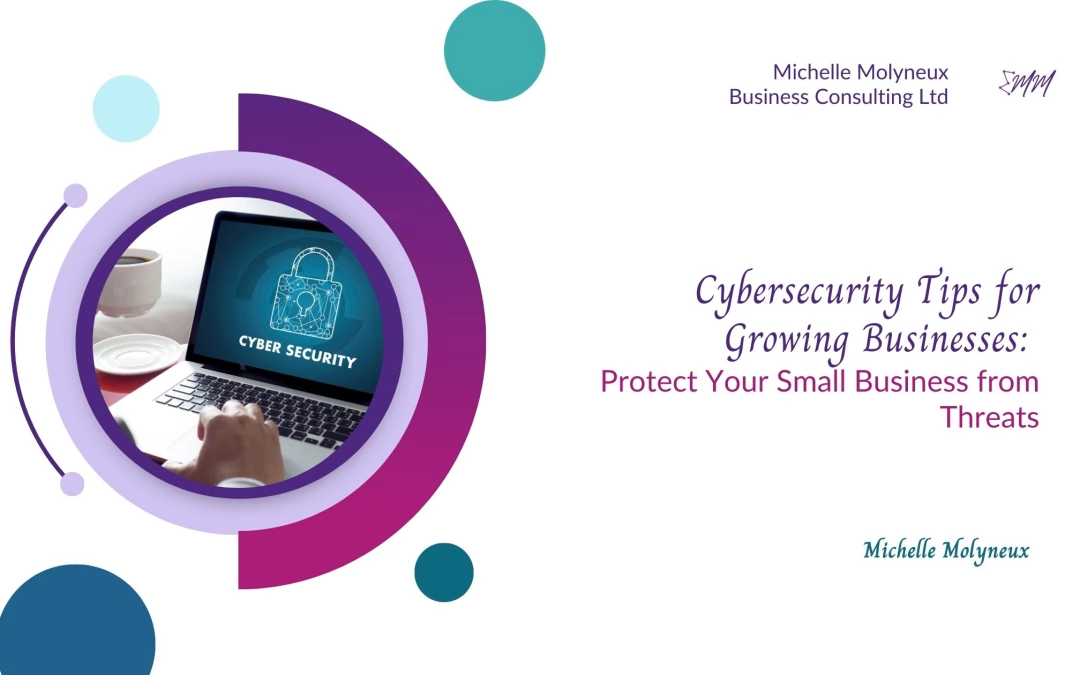As a growing business with anywhere from 2 to 50 staff members, you’re probably juggling many responsibilities—cybersecurity may not always feel like a top priority. However, with cyberattacks on the rise and data protection laws such as the UK GDPR requiring strict compliance, securing your business should be at the top of your list. This blog will cover some essential cybersecurity tips for growing businesses and introduce you to a series of blogs designed to help you manage, train, and protect your small business from digital threats.
Why Cybersecurity Matters for Small Businesses
Many small business owners think, “Cybercriminals target big corporations, not businesses like mine.” However, small businesses are often more vulnerable because they may not have the resources for dedicated IT teams or the advanced security tools that larger companies use. Almost half of all cyberattacks target small businesses, and the effects can be devastating—data breaches, financial loss, and damage to your reputation.
Following some straightforward cybersecurity practices can greatly reduce the risk of these incidents and keep your business secure.
1. Stay Up to Date with Software and Security Patches
One of the simplest but most effective ways to protect your business is by updating your software. Hackers often exploit vulnerabilities in outdated software, so regular updates and patches are crucial. Whether it’s your operating system, antivirus software, or cloud storage, always enable automatic updates to stay protected.
Tip: Consider using a centralised IT management system to help you track updates across all business devices.
2. Implement Strong Access Controls
Controlling who has access to your systems is another key element of cybersecurity. Not all employees need access to sensitive data, so it’s important to establish clear access control policies. Only grant access to individuals who need it, and consider implementing role-based access control (RBAC), which limits what employees can do based on their roles.
For example, junior staff may not need financial or customer data access, while team leaders or managers might.
3. Educate Your Team on Cybersecurity
Your employees are your first line of defence. Without proper training, human error can compromise even the best security systems. Simple training on recognising phishing emails, avoiding malware, and protecting company devices can go a long way in preventing breaches.
If you’re unsure where to start with training, stay tuned for our upcoming blog on “Cybersecurity Training for Your Team,” where we’ll explain exactly what your team needs to know to keep your business safe.
4. Back Up Your Data Regularly
Data loss can happen for various reasons, from cyberattacks to system failures. To ensure your business can quickly recover, make regular backups of important data and store them securely—preferably on-site and in the cloud. Backups should be tested regularly to ensure they can be restored if needed.
The UK GDPR also requires businesses to protect personal data, and having reliable backups is a key part of compliance.
5. Use Multi-Factor Authentication (MFA)
Relying solely on passwords is no longer enough. Multi-factor authentication (MFA) adds an extra layer of security by requiring users to provide two or more verification factors, such as a password and a text message code. This significantly reduces the chances of unauthorised access, even if a password is compromised.
We’ve already written extensively on strong password policies in another blog, which you can check out here. It’s a great read if you want to ensure your team is using the right methods to create and manage passwords securely.
6. Monitor and Respond to Security Threats
Even with the best defences, monitoring potential threats is essential. Consider using tools like firewalls, intrusion detection systems, and security monitoring software to monitor your network. If you notice suspicious activity, investigate and mitigate the issue quickly.
Planning for a cyber incident by having a response plan in place can also help you handle threats more efficiently.
What’s Next?
This blog is just the start! In the coming weeks, we’ll explore topics such as managing cybersecurity risks, training your team, and the role of AI in cybersecurity. Each post will provide growing businesses with practical, actionable advice.
Remember to subscribe to our newsletter to receive the latest updates and explore some of our other helpful blogs, such as our post on creating strong password policies.
For more detailed guidance on cybersecurity, check out the National Cyber Security Centre (NCSC) and the Information Commissioner’s Office (ICO), which offer excellent resources specifically for small businesses.
Stay Protected, Stay Informed
Cybersecurity might seem overwhelming initially, but by taking these basic steps, you’re already on the path to securing your business and protecting your customers’ data. Stay informed, stay proactive, and stay protected!
Associated articles
- Essential Cybersecurity Training for Teams to Safeguard Data

